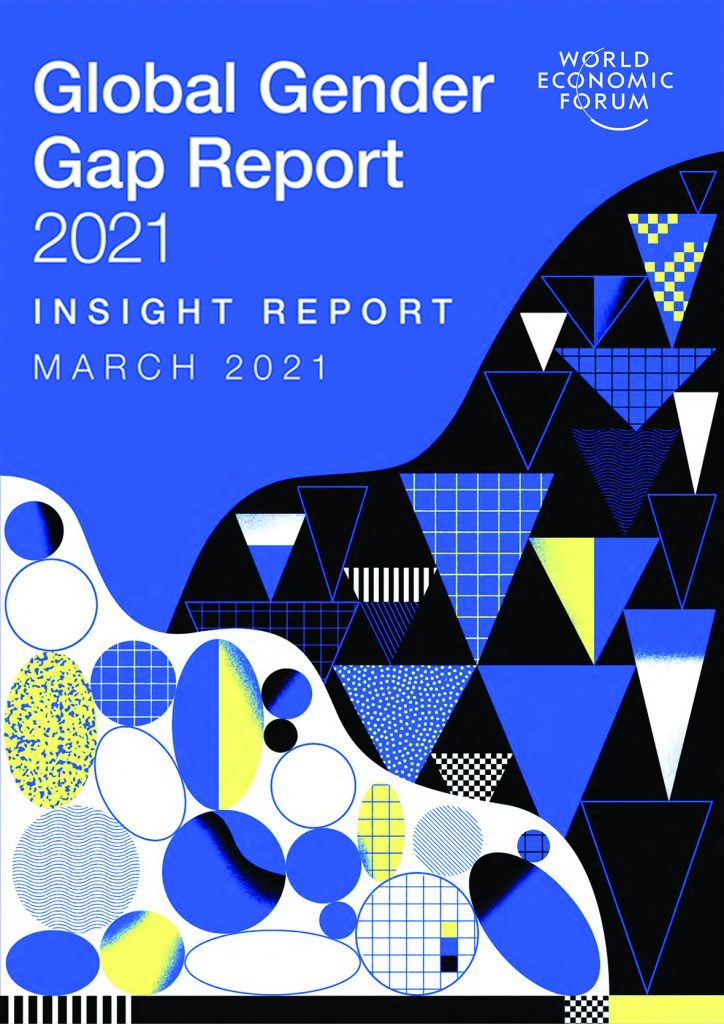Sombre tidings
The Gender Gap Report 2021
By Ahana Lakshmi (ahanalakshmi@gmail.com), Independent Consultant, Chennai
In this year’s Global Gender Gap report, 156 countries have been benchmarked with the sombre tidings that there has been a step back compared to 2020 and as an extra 36 years have been added to the time remaining to close the gender gap. The 2018 report had stated that the world had closed 68 percent of the global gender gap, as measured in terms of four key pillars: economic opportunity; political empowerment; educational attainment; and health and survival. These figures had seen marginal improvement in the intervening years.
 The 2021 report says that the gender gap is at 68 percent, with the deterioration partly attributed to a widening political gender gap in several large population countries. Iceland remains the most gender equal country for the twelfth time. The five most improved countries this year have bettered their score by at least 4.4 percentage points. They are Lithuania, Serbia, Timor-Leste, Togo and United Arab Emirates. On its current trajectory, the political gender gap is expected to take 145.5 years to close, compared to 95 years in the 2020 edition of the report, an increase of over 50 percent, driven mainly by negative trends in some large countries; but since the previous edition of the report, there are more women in parliaments, and two countries have elected their first female prime minister.
The 2021 report says that the gender gap is at 68 percent, with the deterioration partly attributed to a widening political gender gap in several large population countries. Iceland remains the most gender equal country for the twelfth time. The five most improved countries this year have bettered their score by at least 4.4 percentage points. They are Lithuania, Serbia, Timor-Leste, Togo and United Arab Emirates. On its current trajectory, the political gender gap is expected to take 145.5 years to close, compared to 95 years in the 2020 edition of the report, an increase of over 50 percent, driven mainly by negative trends in some large countries; but since the previous edition of the report, there are more women in parliaments, and two countries have elected their first female prime minister.
Two opposing trends are seen in indicators describing ‘Economic Opportunity’ and the participation of women in the workforce – a rising proportion of women among skilled professionals and progress towards wage equality versus the persistent lack of women in leadership positions. Now it is expected to take 267.6 years to reach parity in this dimension. A new measure created in collaboration with the LinkedIn Economic Graph team to capture the difference between men and women’s likelihood to make an ambitious job switch indicates that women experience a bigger gender gap in potential-based job transitions in fields where they are currently under-represented such as cloud computing. Under-representation in the labour market remains one of the most important sources of inequality between men and women.
The data available for the 2021 edition of the report does not yet fully reflect the impact of the pandemic but projections from select countries indicates that gender gaps in labour participation are wider since the pandemic began, partially re-opening gaps that had been closed. Overall, gender gaps in education and health are nearly closed. However, the ‘last mile’ of progress in ‘Educational Attainment’ is proceeding slowly and on its current trajectory, it is expected to take another 14.2 years to completely close this gap.
In ‘Health and Survival’, 96 percent of the gender gap has been closed, registering a marginal decline since last year (not due to COVID-19) and the time taken to close the gap remains undefined. Requirements such as investments in the care sector to support women in the workforce flagged in earlier reports have been emphasised in the current pandemic which has shown that care responsibilities fell disproportionately on women, contributing to higher levels of stress and lower levels of productivity.
The report also offers ways for countries to work towards closing their gender gaps and is available at http://www3.weforum.org/docs/WEF_GGGR_2021.pdf